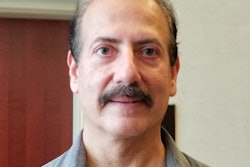
As the development of artificial intelligence (AI) tools for healthcare continues, so does the debate about whether incorporating it into patient care will put physicians -- especially radiologists -- out of a job.
It's unlikely, according to a presentation delivered September 22 at the AuntMinnie.com Fall 2020 Virtual Conference. But radiologists do have a public relations problem when it comes to AI that needs to be addressed -- and social media is a great way to do this, Dr. Sonia Gupta told session attendees.
"There's been quite an evolution of social media over the last several years," she said. "Now 72% of Americans use the internet to get information about personal health, public health, and even particular physicians. But that information isn't necessarily accurate, and when it comes to AI, this inaccuracy can affect the narrative of AI and radiology. We definitely have a PR problem."
In her presentation, Gupta outlined the current state of AI and radiology and offered six ways her colleagues can change the way AI is perceived.
Information access
How is health information disseminated? Peer-reviewed journals, public figures, and books, as well as social media and internet searches, Gupta said. And when it comes to a complex topic like AI, it can be difficult for patients to make sense of all the information out there.
"Clinicians participate in journal clubs to discuss academic articles," she said. "And if we have to work at keeping up with complicated information, imagine how inaccessible this information may be for patients."
The complexity of AI has combined with a negative story about it and radiology, according to Gupta. She noted that in 2016, Dr. Ezekiel Emanuel predicted that eventually the specialty will cease to exist. In 2017, Vinod Khosla, founder of Sun Microsystems and venture capitalist, stated that because of AI, radiology would be obsolete in five years; last year, he said that artificial intelligence will advance so far that "any radiologist who continues to practice in 10 years will be killing patients every day."
"It's disheartening to come to work every day trying to do what's best for patients [and hear this narrative]," she said. "It has a negative effect on morale. Medical students may think that radiologists are in the basement, with no patient or peer interaction, but that's just not true: We perform procedures, we attend tumor boards, we work with our surgical and oncology colleagues."
Get the word out
Radiologists must get the word out and correct the story about AI and the specialty, according to Gupta. And social media is part of that effort. She listed six ways to address misinformation about AI and radiology and to transmit accurate healthcare information to patients.
- Get online. "Make use of your hospital or department's Twitter or Facebook accounts," she said. "Mammographers have used Twitter to conduct Q&As for patients, and interventional radiologists have used social media to directly inform patients about procedures like uterine artery embolization."
- Speak out. "Get involved with local or national news outlets," Gupta said. "There are a number of notable radiologists acting as medical correspondents."
- Make use of in-person opportunities. "Attend tumor board, participate in hospital committees, mentor medical students or give a lecture or run a clerkship," she said. "Counter the myth that radiologists have no patient interaction -- because if there's patient interaction, AI can't replace you."
- Get tight with tech. "Be a consultant for a tech company that's developing healthcare AI," Gupta said. "Work directly with engineers or connect with radiologists who have started tech firms or are chief medical officers at tech companies."
- Set the standard. "If AI can improve radiologists' efficiency and decrease burnout, that will translate to better patient care," she said.
It's up to radiologists to determine how the combination of AI and radiology is perceived, Gupta concluded.
"Unfortunately, in the past others have shaped the story of what radiologist do, and how AI fits in with that -- from tech companies, venture capital firms, other physicians," she said. "It's time for us to start doing that. Get out there and engage. It will make a difference."



















